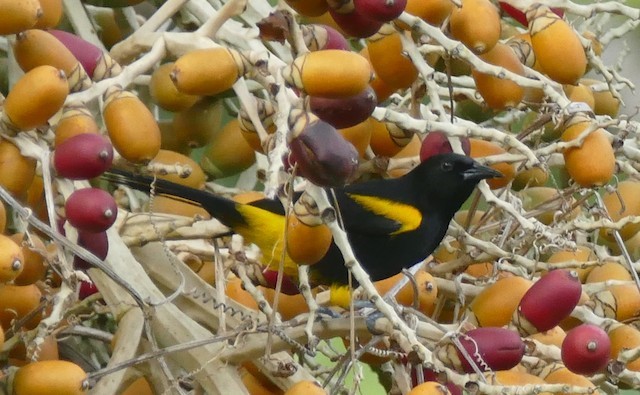Birdfinding.info ⇒ Occurs throughout Puerto Rico, mostly in woodland edge habitats with tall trees. Reliable sites near San Juan include Cambalache State Forest and lower elevations of El Yunque National Forest. Within San Juan, Julio Enrique Monagas National Park is a likely place to look for it.
Puerto Rican Oriole
Icterus portoricensis
Endemic to Puerto Rico, where it is fairly common throughout the island in a wide variety of wooded habitats, from coastal palm stands to montane forests. Occurs in settled areas, including metropolitan San Juan.
Identification
Adult is distinctively patterned black-and-yellow: mostly black with bright yellow shoulders, leggings, vent, and rump.

Puerto Rican Oriole. (El Yunque National Forest, Puerto Rico; February 1, 2010.) © Steve Metz

Puerto Rican Oriole. (Barrio Naranjo, Comerío, Puerto Rico; April 3, 2009.) © Ernesto Burgos

Puerto Rican Oriole. (Barrio Naranjo, Comerío, Puerto Rico; April 3, 2009.) © Ernesto Burgos

Puerto Rican Oriole. (Barrio Naranjo, Comerío, Puerto Rico; April 3, 2009.) © Ernesto Burgos
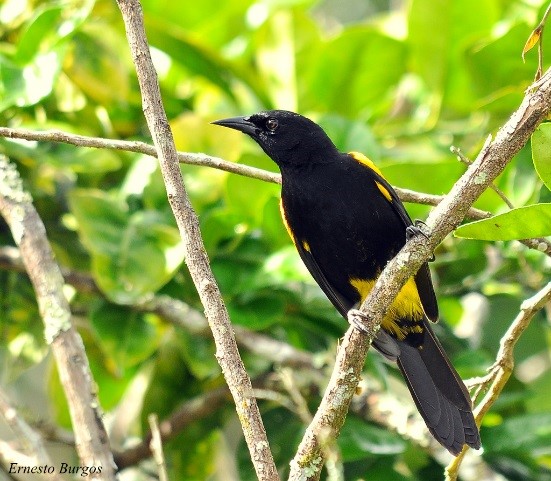
Puerto Rican Oriole. (Barrio Naranjo, Comerío, Puerto Rico; April 3, 2009.) © Ernesto Burgos

Puerto Rican Oriole, carrying prey. (Puerto Rico; April 12, 2014.) © Ernesto Burgos
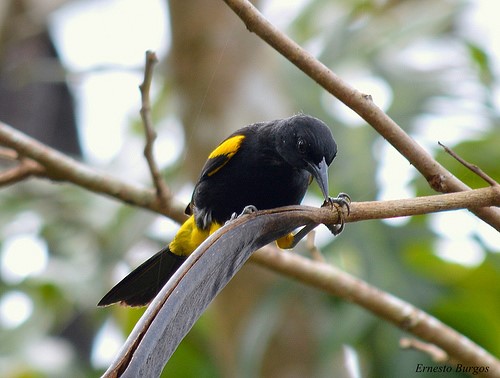
Puerto Rican Oriole. (Barrio Naranjo, Comerío, Puerto Rico; April 13, 2013.) © Ernesto Burgos

Puerto Rican Oriole. (Cambalache State Forest, Puerto Rico; February 19, 2009.) © Ernesto Burgos
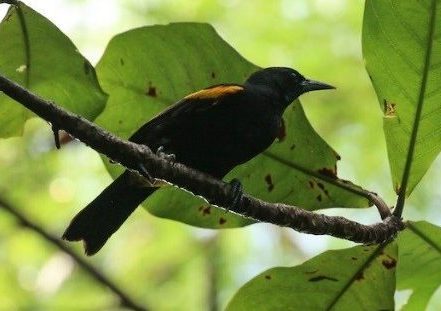
Puerto Rican Oriole, appearing all-black with yellow shoulders in this view. (Aguadilla, Puerto Rico; December 5, 2016.) © Tommy Pederson
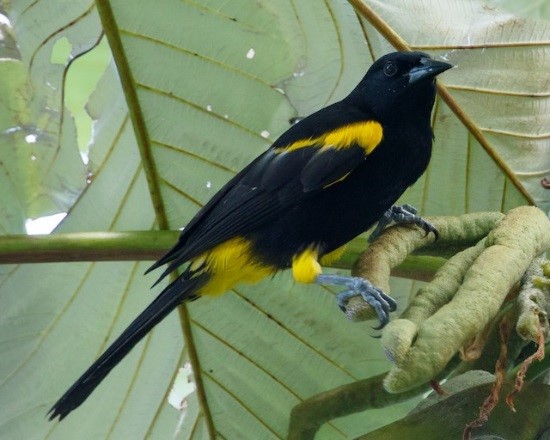
Puerto Rican Oriole. (El Yunque National Forest, Puerto Rico; January 10, 2016.) © Jeff Stacey
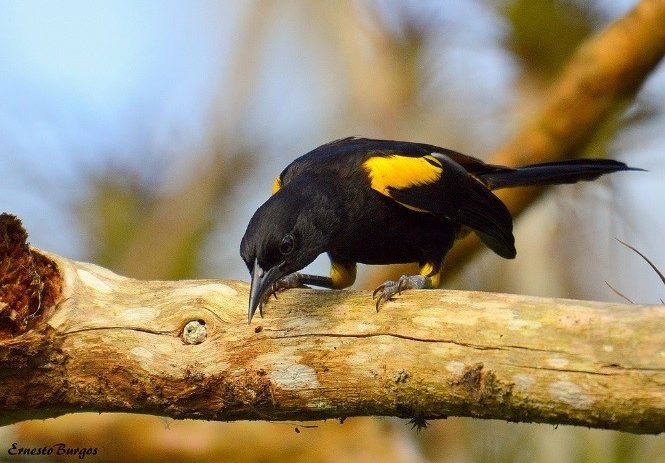
Puerto Rican Oriole. (Puerto Rico; May 2, 2016.) © Ernesto Burgos
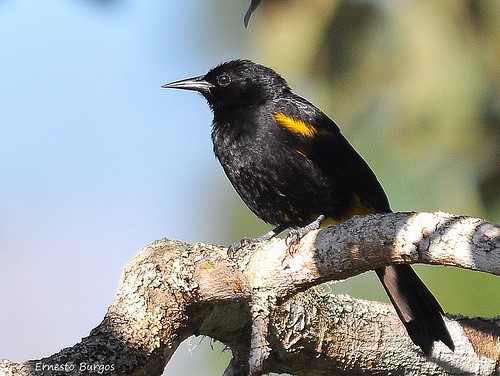
Puerto Rican Oriole, appearing all-black with yellow shoulders in this view. (Barrio Naranjo, Comerío, Puerto Rico; February 5, 2013.) © Ernesto Burgos
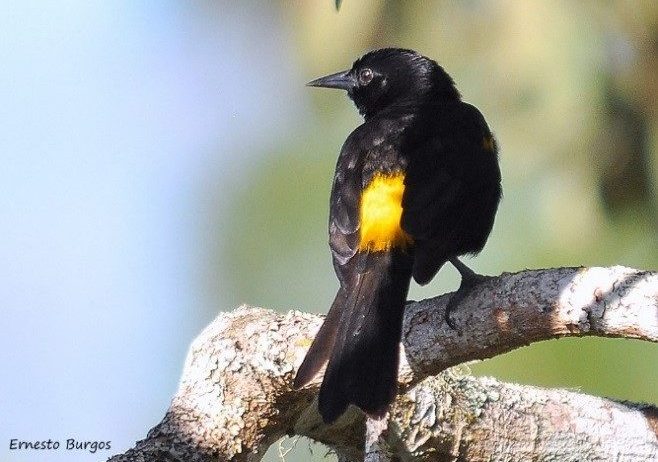
Puerto Rican Oriole, appearing all-black with a yellow rump in this view. (Barrio Naranjo, Comerío, Puerto Rico; February 5, 2013.) © Ernesto Burgos

Puerto Rican Oriole, appearing largely yellow in this view. (El Yunque National Forest, Puerto Rico; January 25, 2014.) © Oliver Burton

Puerto Rican Oriole. (Guánica State Forest, Puerto Rico; March 28, 2012.) © Nancy Crosby
Immature is olive overall, essentially unmarked until it begins molting into adult plumage.
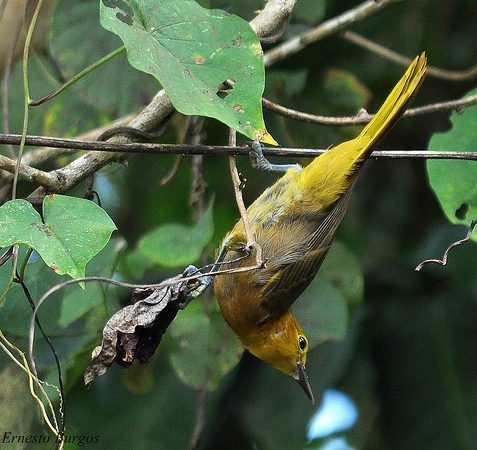
Puerto Rican Oriole, immature. (Barrio Naranjo, Comerío, Puerto Rico; April 25, 2009.) © Ernesto Burgos
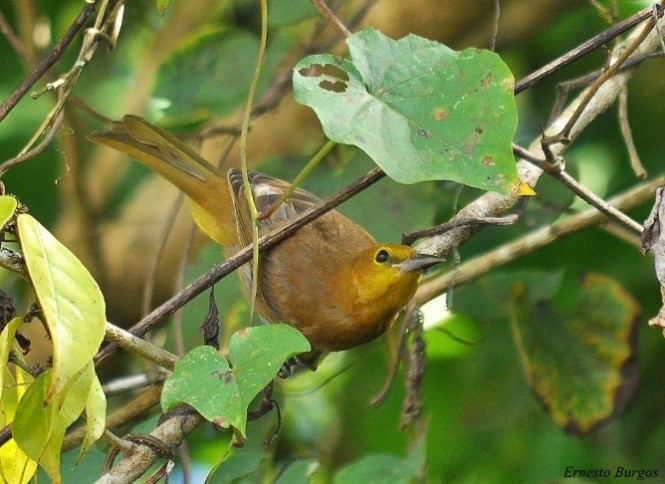
Puerto Rican Oriole, immature. (Barrio Naranjo, Comerío, Puerto Rico; April 25, 2009.) © Ernesto Burgos
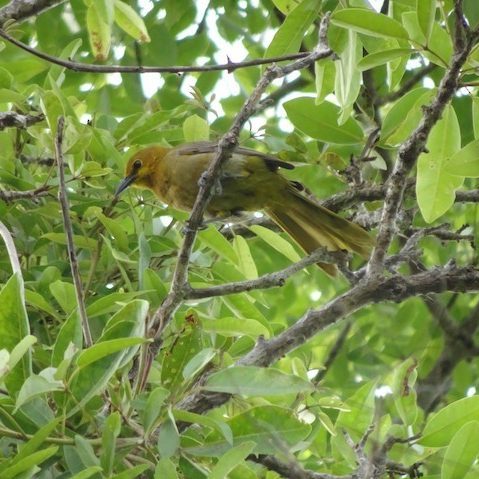
Puerto Rican Oriole, immature. (Finca Carite, Guayama, Puerto Rico; July 22, 2018.) © Ana Arguelles

Puerto Rican Oriole, immature molting into adult plumage. (Rancho Vegas, Puerto Rico; May 12, 2013.) © José Santiago
Voice. Song is a series of clear whistles in a distinctive five-note phrase, repeated frequently:Contact call is an abrupt chek! note with a vaguely musical quality:
Notes
Monotypic species.
Formerly considered conspecific with Bahama, Cuban, and Hispaniolan Orioles, collectively known as the Greater Antillean Oriole (Icterus dominicensis). At other times, Greater Antillean was considered conspecific with the Black-cowled Oriole (Icterus prosthemelas) of Central America, collectively known as the Black-cowled Oriole (Icterus dominicensis). The basis for lumping all of these forms together was never strong. The adults are visually distinct and have different songs, and the immature and intermediate plumages are even more visually distinct.
Genetic studies have confirmed that most members of this group are more closely related to other species than they are to one another: the Central American Black-cowled is more closely related to Orchard Oriole; Puerto Rican is more closely related to the three Lesser Antillean orioles (Montserrat, Martinique, and St. Lucia); and Hispaniolan is most closely related to the combined Puerto Rican and Lesser Antillean group. Among the five species formerly lumped together as the “Black-cowled Oriole,” only Cuban and Bahama are a close phyletic pair, although ironically these are the most different from one another visually: Cuban being the blackest and Bahama the yellowest.
References
eBird. 2018. eBird: An online database of bird distribution and abundance. Cornell Lab of Ornithology, Ithaca, N.Y. http://www.ebird.org. (Accessed October 12, 2018.)
Fraga, R. 2018. Puerto Rican Oriole (Icterus portoricensis). In Handbook of the Birds of the World Alive (J. del Hoyo, A. Elliott, J. Sargatal, D.A. Christie and E. de Juana, eds.). Lynx Edicions, Barcelona. https://www.hbw.com/node/62274. (Accessed October 12, 2018.)
Jaramillo, A., and P. Burke. 1999. New World Blackbirds: The Icterids. Princeton University Press, Princeton, N.J.
Raffaele, H. 1989. A Guide to the Birds of Puerto Rico and the Virgin Islands. Princeton University Press, Princeton, N.J.
Raffaele, H., J. Wiley, O. Garrido, A. Keith, and J. Raffaele. 1998. A Guide to the Birds of the West Indies. Princeton University Press, Princeton, N.J.
